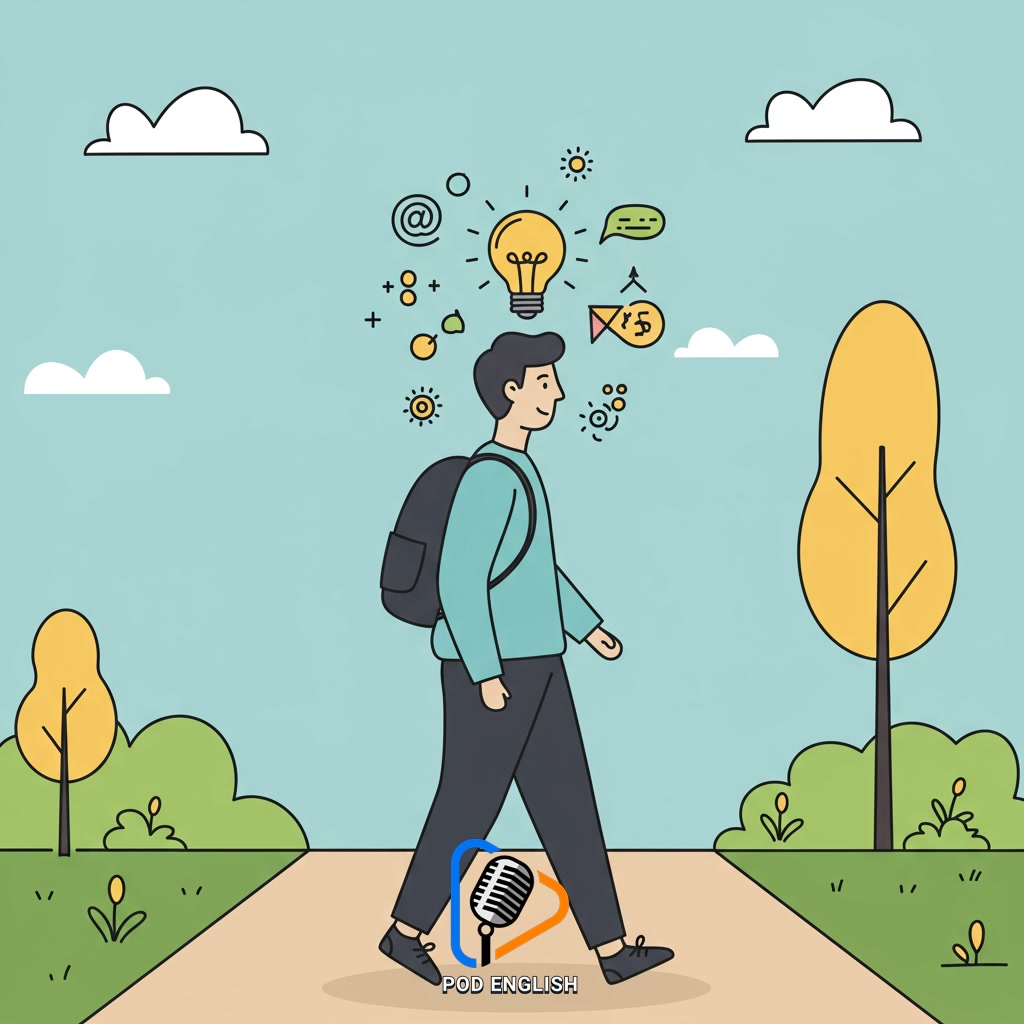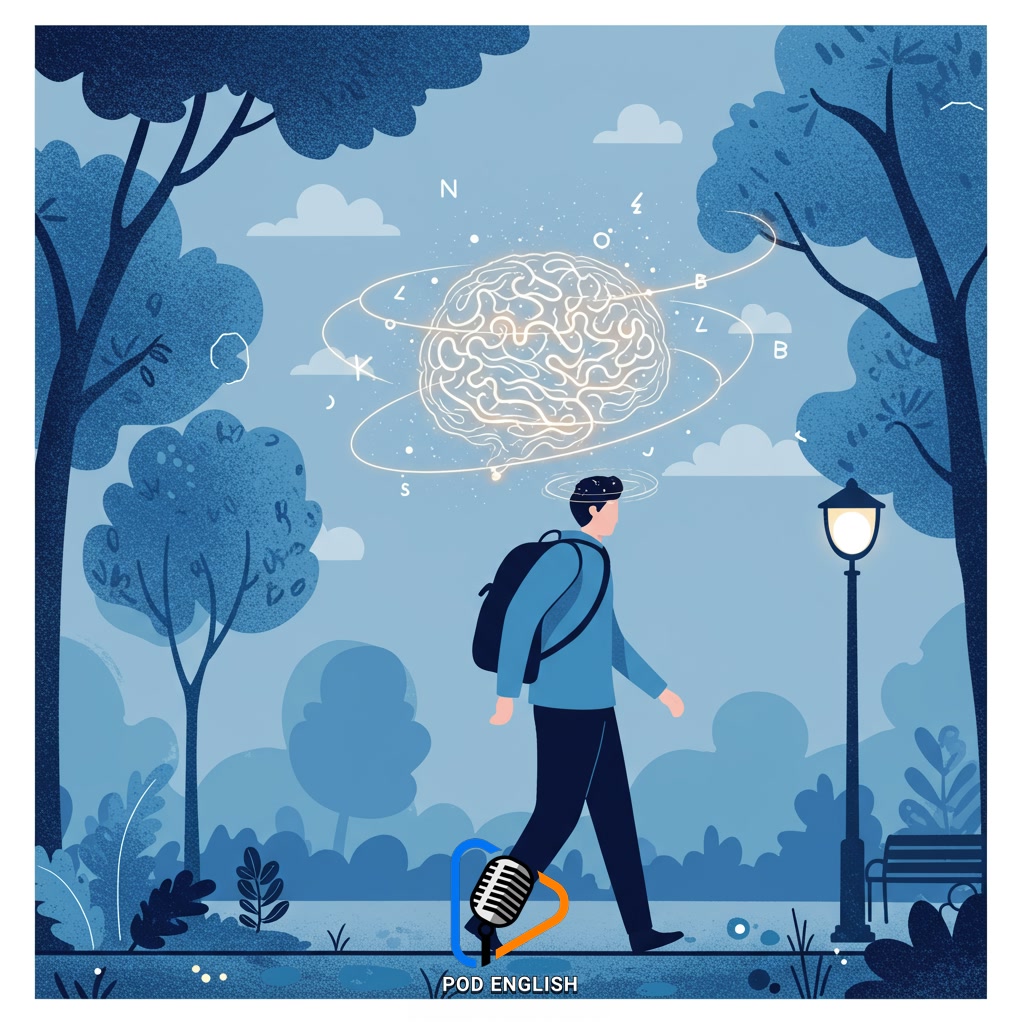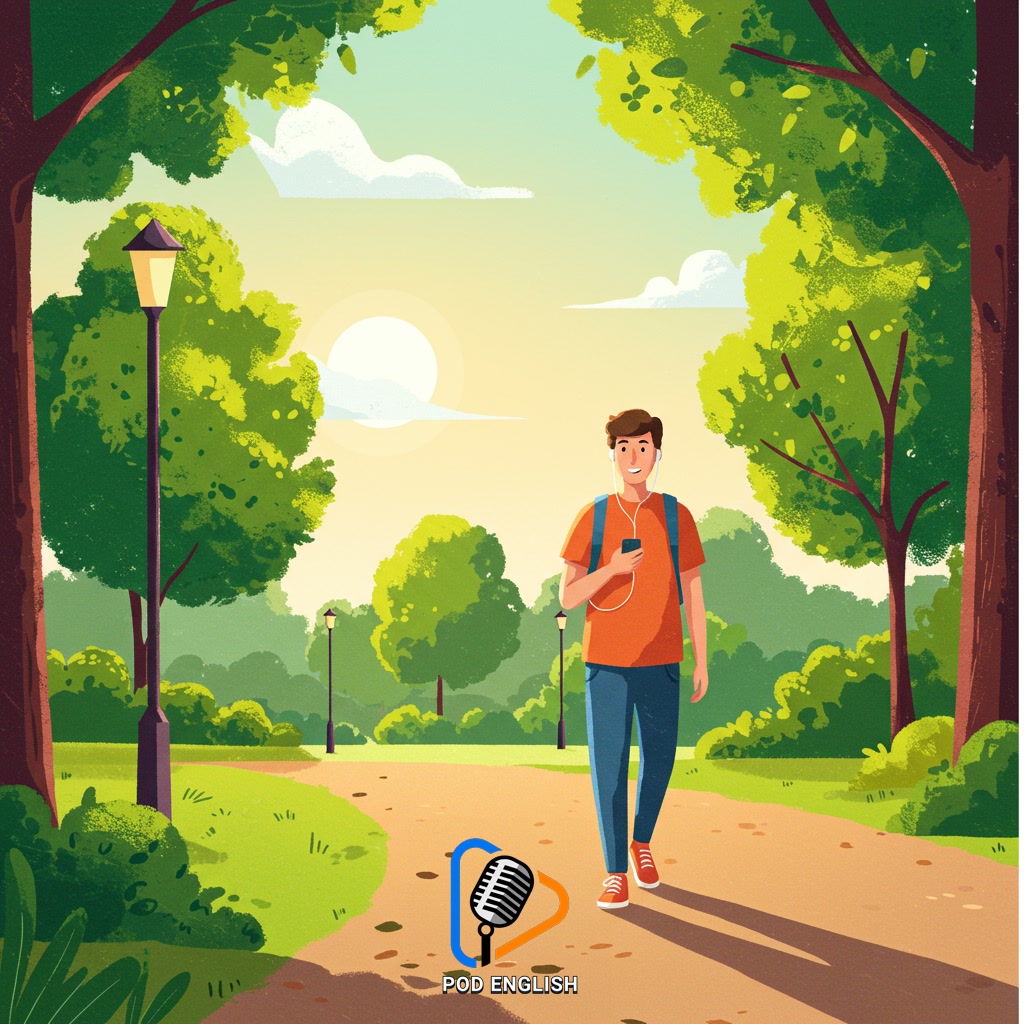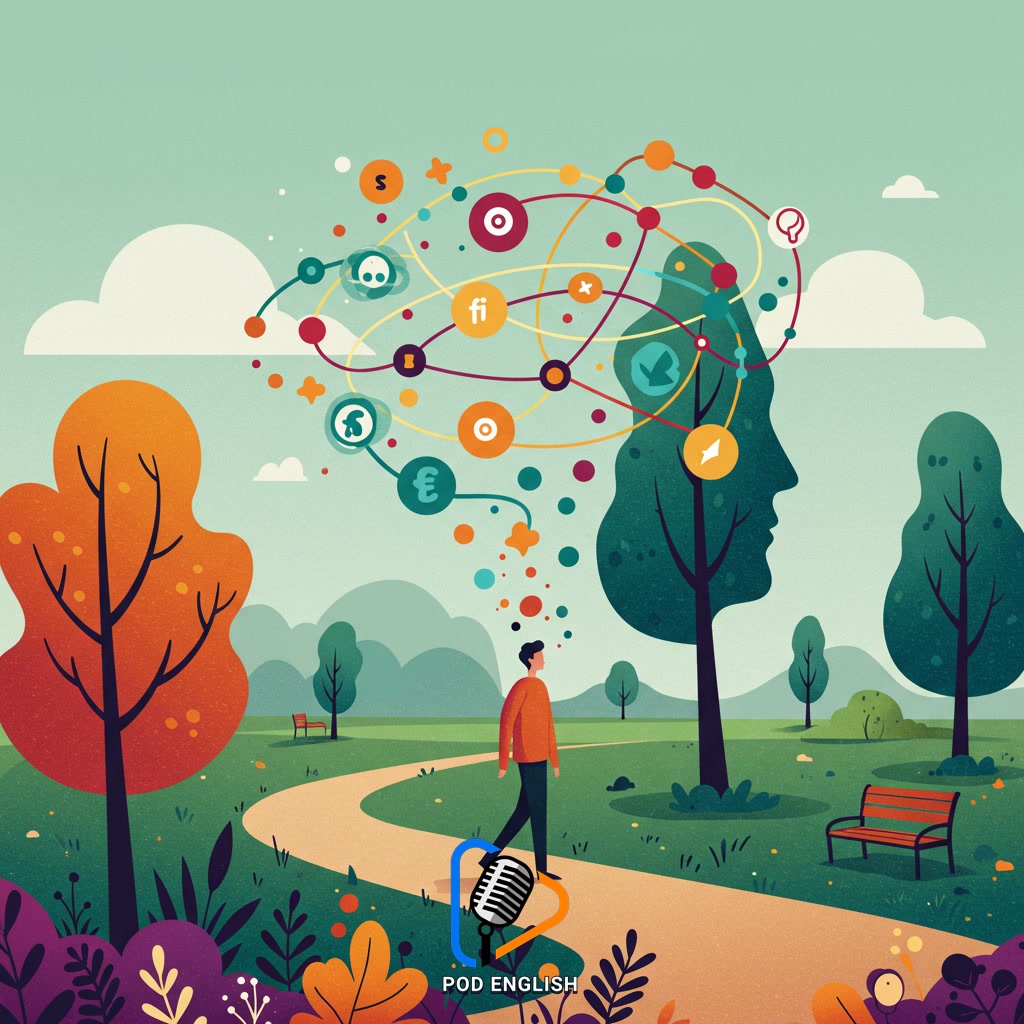Learn English
Boost Creativity & Problem-Solving: Walk to Learn English

This content explores the link between physical activity, specifically walking, and enhanced cognitive functions like creativity and problem-solving. It proposes leveraging the benefits of walking as a method for improving English language acquisition. The approach suggests integrating movement with focused English practice to potentially facilitate more effective learning. Combining these elements aims to boost both mental agility and language proficiency.
Table of Contents
- Section 1: Introduction: The Synergy of Movement and English Learning
- Section 2: How Walking Boosts Brain Function, Creativity, and Problem-Solving
- Section 3: Connecting Physical Activity with Language Acquisition
- Section 4: Practical Ways to ‘Walk to Learn English’
- Section 5: Specific Benefits for English Learning: Enhanced Creativity and Problem-Solving
- Section 6: Tips for Integrating Walking into Your English Learning Routine
- Section 7: Conclusion: Walking Towards a More Creative and Proficient English Learner
Section 1: Introduction: The Synergy of Movement and English Learning
Welcome to an exploration of how a simple activity, walking, can become a powerful tool in your English learning journey. We often think of learning as a stationary task, but research suggests that physical movement, particularly walking, significantly enhances cognitive functions like creativity and problem-solving abilities. This introduction delves into the fascinating synergy between getting your body moving and sharpening your mind. By understanding this connection, we can unlock new, dynamic ways to approach mastering the English language. This document will guide you through integrating short walks into your study routine, aiming to boost both your mental agility and your language proficiency simultaneously.

Introduction: The Synergy of Movement and English Learning
Section 2: How Walking Boosts Brain Function, Creativity, and Problem-Solving
Building on the idea that learning isn’t always static, let’s explore the science behind why walking is so beneficial for your brain. When you walk, even for a short period, your heart rate increases, pumping more blood and oxygen to your brain. This improved circulation fuels brain cells and stimulates the production of neurotransmitters, chemicals essential for thinking, learning, and memory. This physical boost helps clear your mind, reduce mental fatigue, and make connections between ideas that might not occur when you’re sitting still. Essentially, the simple act of walking creates a more fertile ground in your brain for creative thought and the ability to analyze problems from new angles, making it a powerful ally for cognitive function and, by extension, learning new information like English vocabulary or grammar.

How Walking Boosts Brain Function, Creativity, and Problem-Solving
Section 3: Connecting Physical Activity with Language Acquisition
Building on the idea that learning isn’t always static, let’s explore the science behind why walking is so beneficial for your brain. When you walk, even for a short period, your heart rate increases, boosting blood flow not just to your muscles but crucially, to your brain. This increased circulation delivers more oxygen and nutrients, which are vital for optimal brain function. This enhanced state improves cognitive processes like attention, memory consolidation, and information processing speed – all foundational elements for effective language acquisition. By engaging your body in gentle movement, you create a receptive environment in your brain, making it potentially easier to absorb new English vocabulary, grasp grammatical structures, and retain what you’ve learned. It’s a powerful connection between physical well-being and mental agility, directly supporting your language learning journey.

Connecting Physical Activity with Language Acquisition
Section 4: Practical Ways to ‘Walk to Learn English’
Building on the brain benefits of walking, let’s explore practical ways to make “Walk to Learn English” a reality. Instead of seeing learning as sitting at a desk, integrate English practice into your movement. You could listen to English podcasts or audiobooks related to your interests during your walk, actively trying to understand context. Another method is to use a mobile app or digital flashcards to review new vocabulary or grammar points as you stroll, pausing briefly if needed. You can also practice speaking by describing the objects, people, and actions you see around you in English, or even rehearse conversations aloud. This active engagement with the language while your body is in motion can help solidify learning and make it feel less like a chore.

Practical Ways to ‘Walk to Learn English’
Section 5: Specific Benefits for English Learning: Enhanced Creativity and Problem-Solving
Building on the brain benefits of walking, enhanced creativity and problem-solving directly impact your English learning journey. When your mind is more agile and open, you can approach vocabulary memorization in new ways, finding unique associations or visual cues. Improved problem-solving skills help you decode complex sentences, infer meaning from context when encountering unfamiliar words, or navigate tricky grammar rules. Instead of getting stuck, you become more resourceful in finding solutions to language challenges. This increased mental flexibility, fostered by physical activity like walking, makes the process of acquiring and using English feel more dynamic and less like a rigid task, allowing for deeper engagement and better retention of new information.

Specific Benefits for English Learning: Enhanced Creativity and Problem-Solving
Section 6: Tips for Integrating Walking into Your English Learning Routine
Building on the idea that walking boosts cognitive function, applying this to your English studies is key. To integrate walking effectively, try setting specific goals for your walk-and-learn sessions. For instance, plan to review a set of vocabulary words, listen to an English podcast, or mentally practice speaking about a topic while you walk. You can also use the walk to observe your surroundings and describe them in English in your head or quietly aloud. Another tip is to use the rhythm of walking to help memorize phrases or grammar rules. Short, regular walks are often more beneficial than long, infrequent ones. Make it a consistent part of your daily or weekly routine for effective English learning. This simple habit can make your learning process more dynamic and enjoyable.

Tips for Integrating Walking into Your English Learning Routine
Section 7: Conclusion: Walking Towards a More Creative and Proficient English Learner
In conclusion, embracing walking is more than just physical exercise; it’s a powerful strategy for boosting your cognitive abilities. As we’ve seen, even short walks can significantly enhance creativity and problem-solving skills. By intentionally integrating walking into your English learning routine, you leverage these benefits directly for language acquisition. This means potentially improving your ability to recall vocabulary, understand complex grammar, and navigate challenging communication situations with greater ease and innovative thinking. Think of each walk as a step not only for your physical health but also for sharpening your mind and becoming a more creative, adaptable, and ultimately, a more proficient English learner. Make walking a consistent, positive part of your language learning journey.

Conclusion: Walking Towards a More Creative and Proficient English Learner













